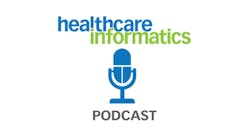Over the past few months, we at Healthcare Informatics have been noting the headwinds buffeting some of the state-level HIE organizations. In May, California replaced Cal eConnect, the nonprofit organization created to develop the state’s HIE. That effort is now led by the Institute for Population Health Improvement at the University of California, Davis. Cal eConnect had struggled with several changes in leadership. In June, the board of the nonprofit Health Information Partnership for Tennessee (HIP TN) announced plans to wind down its operations. The group was created three years ago to help Tennessee create a statewide clinical health information exchange. Officials at HIP TN said the state decided to pursue a simpler strategy that relies on secure e-mail transmission of health information among providers.
Now it’s Kansas’ turn. In an Aug. 8 story, the Kansas Health Institute (KHI) News Service reported that the Kansas Health Information Exchange board is considering dissolving and turning its regulatory authority over to a state agency. It formed a committee to weight the pros and cons and will hear recommendations from that committee at its Sept. 12 meeting. According to KHI, the proposal to turn its authority back to the Kansas Department of Health and Environment would eliminate more than half of its $400,000 annual costs.
As in other states, funding sustainability is a key issue. Kansas has two regional health information organizations (HIOs), the Kansas Health Information Network and the Lewis and Clark Information Exchange (LACIE.) Initially KHIE was going to provide technology services statewide but changed course to focus on regulatory and policy issues. KHI reported that at the recent KHIE meeting, board member Jerry Slaughter, executive director of the Kansas Medical Society and also chair of KHIN, said doctors and hospitals were concerned they would be assessed fees to help fund KHIE operations and that each additional cost would reduce the likelihood the providers would participate in the networks.
EHR Intelligence also has done some good reporting on these developments. It notes that “the big topic of debate for the upcoming Sept. 12 meeting is whether it’s reasonable to expect providers to pay extra fees to keep KHIE as it stands now.”
We’ll report on what happens at the Sept. 12 meeting and try to interview some of the stakeholders. The follow-up question is will similar problems plague other nonprofits running state-level HIE organizations once the ONC funding starts to dwindle?
Sponsored Recommendations
Sponsored Recommendations

